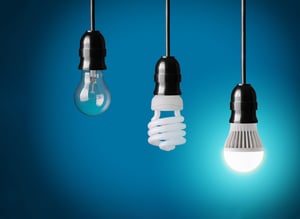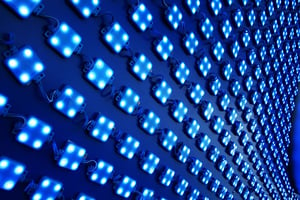 Although it seems like a simple thing, choosing lighting for your environment is important for your operation and can have interesting consequences. Finding the best solution may not be as obvious as it seems. It is definitely important to weight the pros and cons and have knowledge of the environment and applications before choosing a system that is best for your operation.
Although it seems like a simple thing, choosing lighting for your environment is important for your operation and can have interesting consequences. Finding the best solution may not be as obvious as it seems. It is definitely important to weight the pros and cons and have knowledge of the environment and applications before choosing a system that is best for your operation.
The two main types of lighting we will outline in this article are LED lighting and tungsten lighting. While they both product light when power is applied to them, they are distinctly different in how they operate.
LED lighting utilizes Light Emitting Diodes or “LEDs” as the light-producing element. LEDs are semiconductor devices that produce light when DC current is applied across a semiconductor junction.
Traditional tungsten lighting utilizes a filament of tungsten as the light producing element. Tungsten filament bulbs produce light by glowing when an AC or DC current is applied to them
 There are distinct differences between the two types of lighting. The first difference has to do with energy consumption. LED lighting uses much less electrical energy to operate compared to traditional tungsten lighting, which needs to keep a metal filament glowing. The difference in power consumption is also significantly less with LED lighting compared to Tungsten lighting, since an efficient power supply is used to convert AC to the DC power utilized by the LEDs. This usually results in LED lighting systems that run much cooler than tungsten lighting systems.
There are distinct differences between the two types of lighting. The first difference has to do with energy consumption. LED lighting uses much less electrical energy to operate compared to traditional tungsten lighting, which needs to keep a metal filament glowing. The difference in power consumption is also significantly less with LED lighting compared to Tungsten lighting, since an efficient power supply is used to convert AC to the DC power utilized by the LEDs. This usually results in LED lighting systems that run much cooler than tungsten lighting systems.
Temperature is another marked difference between the two lighting systems. Since tungsten lighting has a side effect of waste heat being produced, it often produces a significant amount of heat. LED lighting is much more temperature friendly and does not product the heat that a tungsten system produces. Depending upon the application, excessive heat production can create potential safety issues if the lighting system is not properly monitored.
 Regarding temperature, how both lighting systems perform in external temperature environments also varies. In applications that are affected by extreme environments such as temperature changes or vibration, the solid-state construction of LED lighting often makes LEDs more desirable to use over traditional Tungsten filament products. Tungsten filament products do not perform as well outside of controlled conditions and do not respond as well to extreme temperature changes. While there are severe service-rated Tungsten lighting products, they all employ a tungsten filament which can break or burn out in excessive environments.
Regarding temperature, how both lighting systems perform in external temperature environments also varies. In applications that are affected by extreme environments such as temperature changes or vibration, the solid-state construction of LED lighting often makes LEDs more desirable to use over traditional Tungsten filament products. Tungsten filament products do not perform as well outside of controlled conditions and do not respond as well to extreme temperature changes. While there are severe service-rated Tungsten lighting products, they all employ a tungsten filament which can break or burn out in excessive environments.
While LED lighting has rapidly become the first choice for many applications, there are areas in which Tungsten lighting is still preferred and employed. Knowing the differences between these products can make a big difference in efficiency, cost savings and maintenance for your company.
Need help choosing the best lighting system for your operation? Radwell’s Sales associates can help explain the differences as they apply to YOUR application and help with specifications, pricing and general guidance to help you make the right decisions.
To learn more about Radwell International


